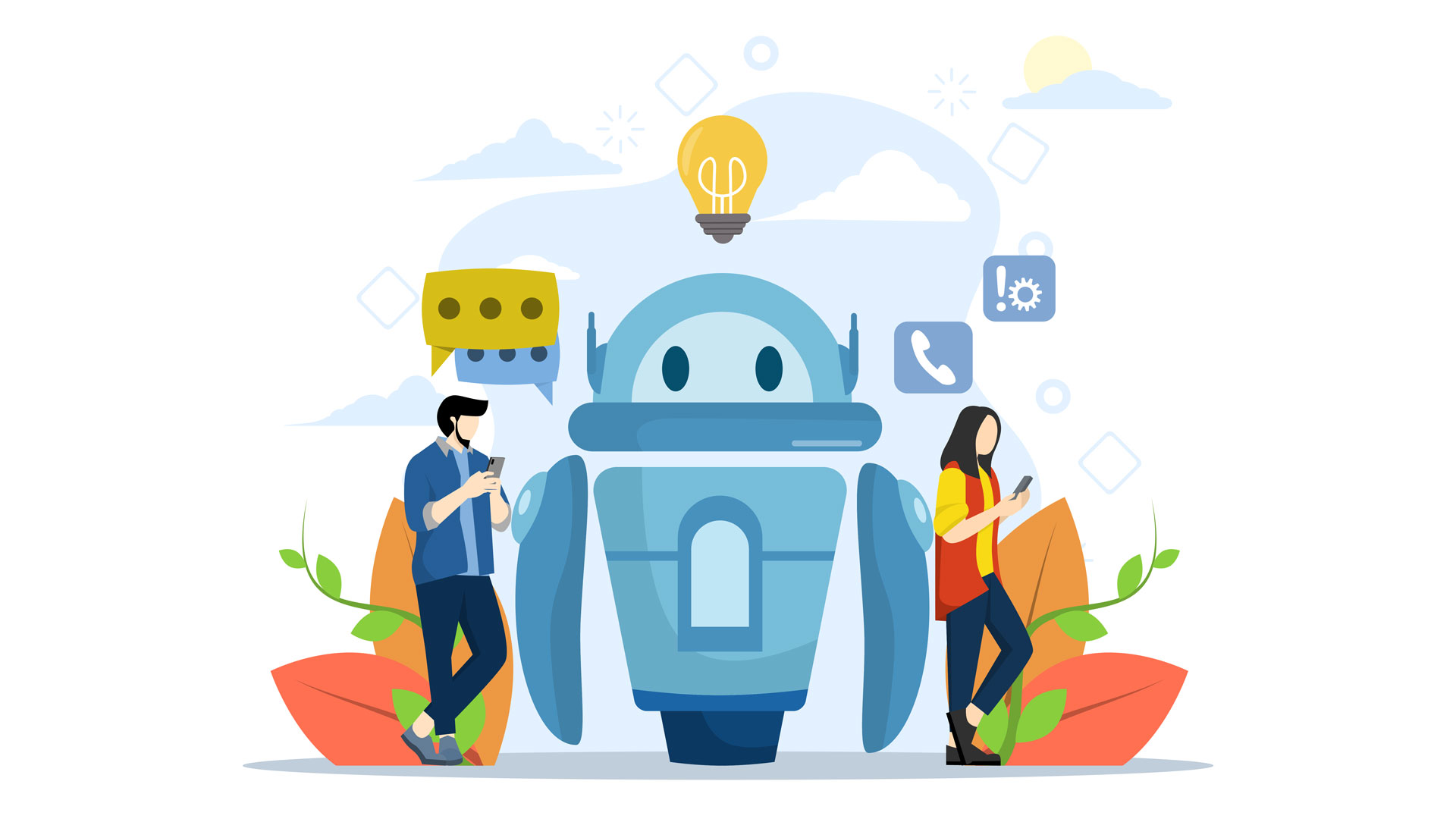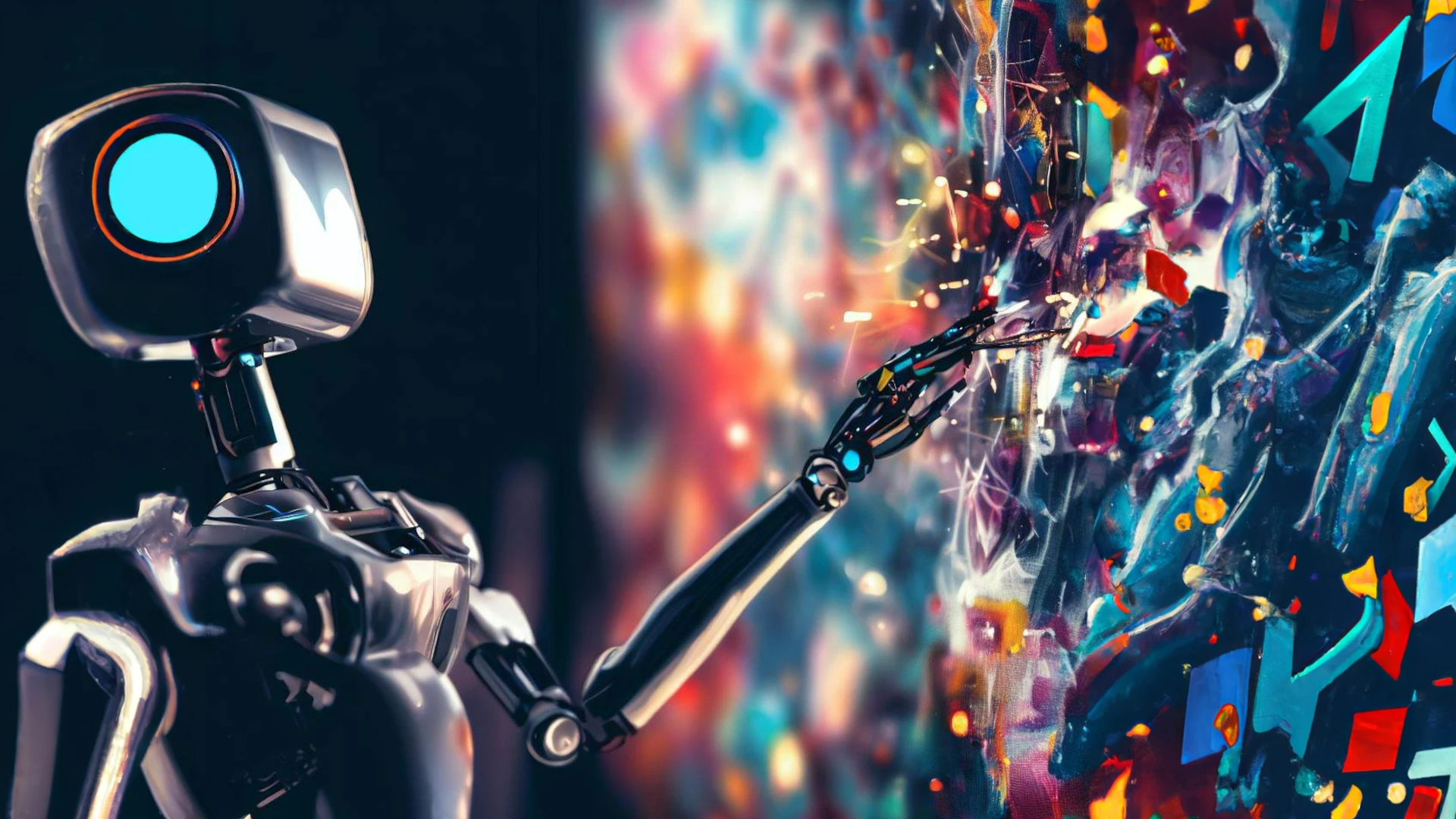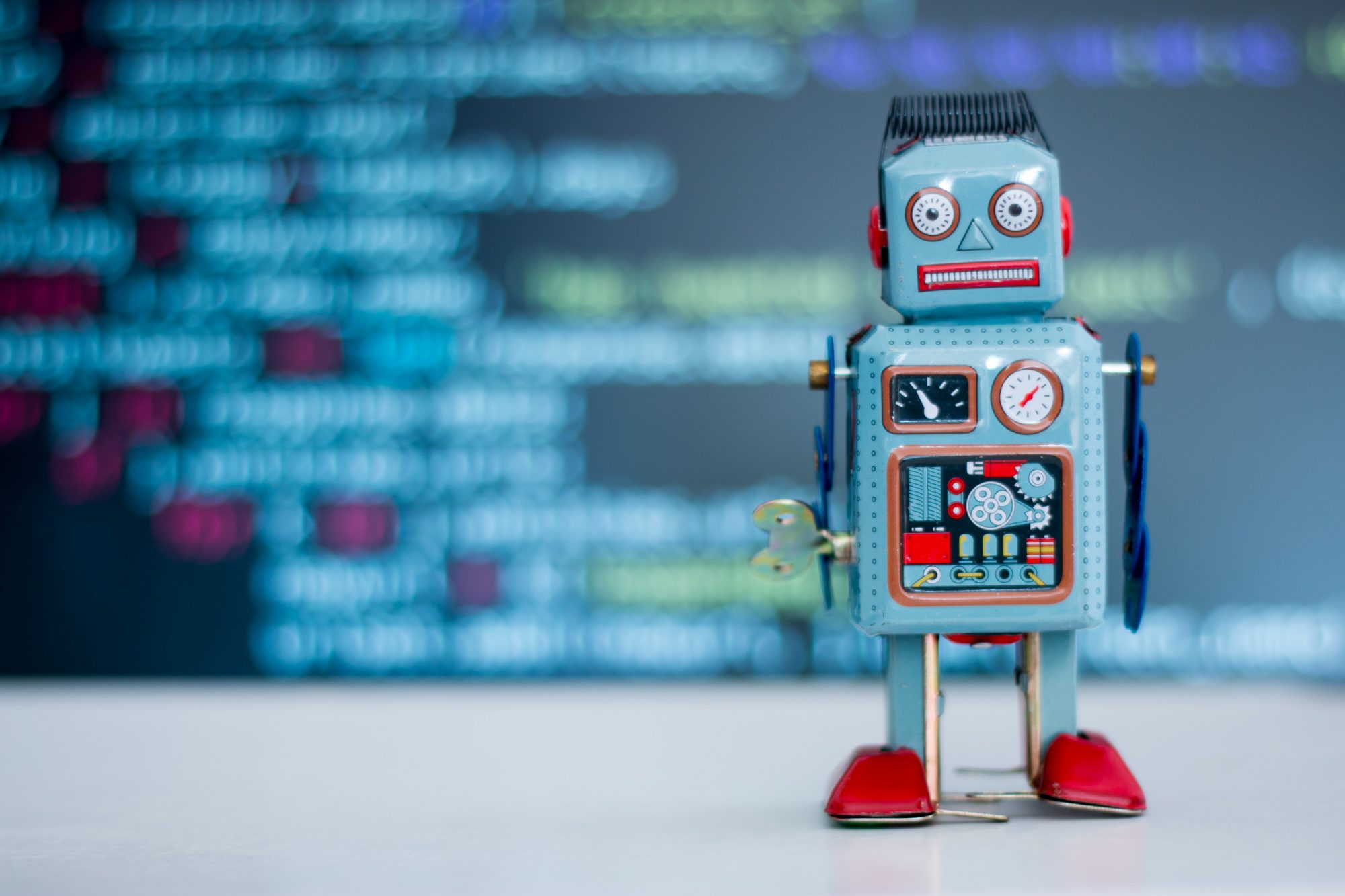What is AI? LLMs, GPTs, and chatbots explained
The idiot’s g-AI-de

AI, it’s absolutely everywhere and appearing in absolutely everything! But when did AI take the leap from the pages of pulp sci-fi novels to the real world and, more importantly, what actually is it? It’s a brave new world we’re heading into, and you’re not alone if you’re unsure as to what’s going on while we make our transition.
Thankfully, while complex in operation, today’s AI is relatively straightforward to understand. Better still, the Hollywood melodrama about AI wanting to enslave humanity and turn the Earth into an apocalyptic wasteland is highly unlikely to be true – at least for now.
So let’s cut the preamble short and get stuck in. Starting with the basic and boring first before moving on to the equally as boring though less basic, and why AI is currently making waves online.
What is AI?

Artificial Intelligence (or AI) as it’s portrayed in science fiction refers to a level of independent intelligence shown by a created machine or piece of software that is similar to the natural intelligence of humans and/or animals. This could mean a computer capable of independent rational thought or ‘feeling’ and comprehending complex human-like emotions. They also sometimes have clamps for hands and a general predilection for the destruction of all mankind.
However, when AI is talked about in present technological terms (or, “the real world”) it refers to a machine or piece of software’s ability to complete intelligent tasks commonly undertaken by humans or other intelligent animals. What do we mean by intelligent tasks? Simply put, intelligent tasks require some level of learning, adaptation, and decision making in order to complete.
For example:
When we make use of route planning software like Apple Maps, Google Maps, or Waze, Artificial Intelligence is used to find the shortest possible route between two points. In doing so, the software will need to learn all possible routes, compare the lengths of each, adapt to any potential obstacles along the way, and finally make a decision about which route to take.
This task requires complex thought (or, intelligence) to perform and would usually be a task undertaken by a human using a map. However, a computer or piece of software lacks the capability of acting independently as a human can. Instead, it needs to be programmed and instructed on how to perform each step.
Sign up to receive The Snapshot, a free special dispatch from Laptop Mag, in your inbox.
This includes what or how to learn, adapt, and make decisions with the information at hand. While a computer is then capable of following a strict set of rules in order to produce similar results that would require intelligence, it isn’t capable of doing so without training or instruction. As such, we refer to these forms of intelligent actions as artificial intelligence.
Examples of AI

While there’s a sudden burst of interest in the technology, Artificial Intelligence has likely been a factor in your life for decades. Sometimes overtly, and other times very subtly. Let’s explore a few of the ways you may have previously interacted with AI in your daily life.
- AI in games: Most computer games, from simple versions of Tic-Tac-Toe to the latest blockbuster titles like Cyberpunk 2077, contain some form of artificial intelligence in order to react intelligently and present a challenge to the player.
During a game of Tic-Tac-Toe, AI may be used to determine your opponent’s next move or to react to moves the player (you) makes. In modern games, AI will be used to determine the actions of NPCs (non-player characters) such as how they react to the player’s actions, learning from them, adapting to them, and then making the best decision on how to counter them.
This could be by taking cover when shot at, running away from a speeding vehicle, or determining the best dialog option to ‘vocalize’ depending on the player’s current actions or state.
- AI in social media: If you’ve been a member of a social media network over the past decade then you’ve likely been handed many of your recommendations for friends to add, videos to watch, and posts to see by some form of AI.
Social media sites/apps learn from your behavior, and adapt to it by displaying more ‘relevant’ content to you over time based on your displayed interests. This is typically referred to as “the algorithm.” An algorithm is a series of automated instructions that can be followed in order to achieve a certain outcome from an input of data.
These AI functions can be used with data like your watch history on sites like YouTube or apps like Netflix to provide (potentially) accurate recommendations on what you should watch next.
- AI in weather forecasts: Did you think the guy stood in front of a green screen in a cheap suit was still using barometers and sling psychrometers to predict the weather? Not a chance.
Nowadays weather forecasting is the result of complex AI algorithms that measure constantly evolving patterns to accurately predict the weather at all scales — from hyper-localized forecasts, to data-driven predictions about our global climate.
Why is AI suddenly so popular?

Clearly, Artificial Intelligence has been around for some time, so why is it suddenly everywhere? Well, ultimately, ChatGPT.
ChatGPT’s success has led to a number of companies adopting similar LLMs for chatbot interfaces to popular services such as Microsoft’s Bing Chat and Google’s Bard. However, other companies have trained transformers and LLMs to recognize and reproduce art, photographs, and even video like Midjourney, Dall.E, and Synthesia.
LLMs allow users to interact with them using natural language, allowing them to be more specific about what they want to generate while lowering the level of expertise required to generate high-quality results. As such, this technology is becoming explosively popular and granting users the ability to produce more accurate content faster and efficiently.
As more companies make use of new tech like transformers and LLMs, services and software are rapidly becoming more widely accessible than ever before. This is causing a swell in companies seeking to gain a competitive advantage over one another. Which is why it seems like every other week a new AI-backed tool, service, or software is launched.
How does AI work?
Thanks to advancements in computing, cloud-based computation, and machine learning (especially the neural network), we’ve been able to develop transformers. Not the Optimus Prime kind (sadly), but a type of AI model that can better understand complex data including human language.
Transformers can be “trained” to learn how to understand data, as well as return data in a similar format. To do this, researchers feed large samplings of information into the transformer and then “test” it on it’s ability to break this data down and recreate it in other ways — repeating the process over a series of weeks or months until the process is complete.
This is a rudimentary explanation of how Generative AI works. Transformers like the ones we mentioned are being trained with text, images, code, or audio to generate new content based on what they’ve learned.
Transformers designed to perform these tasks using natural language are referred to as Large Language Models (or LLMs). One of the more popular LLMs is GPT, a Generative Pre-trained Transformer designed for understanding and generating human-like text.
Is AI alive or sentient?

The question of sentience is a deeply philosophical one. When it comes to AI, the short answer is “No.” The long answer is “Nooooooo.”
No matter how convincing LLMs are, they are little more than language interpretation machines capable of generating human-like responses. While these responses can seem life-like or human, it is only because the data used to train the LLM was comprised of human-written content.
When an AI speaks, it is simply ‘guessing’ which word most accurately follows next within a sequence. No matter how convincing it seems, LLMs like ChatGPT, Bard, and Bing Chat are simply algorithms without true cognizance or emotional capacity.
That doesn’t mean you can be mean to them though… Just in case.
Is AI safe?
I don’t know. You tell me?

In all seriousness, whether or not AI is a safe and/or positive direction for technology to head in is far too wide of a question to answer within this article alone. For now, let's just say that AI is relatively safe to use within our day to day lives – but that it comes at great cost in terms of energy consumption and potential environmental impact.
Also, even though we're still in the early stages of the AI boom, many people's jobs will be heavily affected by this new technology. And, we've yet to truly see exactly how much.
So, instead of making a definitive conclusion on AI's safety here, let's instead highlight some other features (and leave space for future ruminations) on how AI generally impacts our day-to-day lives and leave it up to you to draw your own conclusions.
- Researchers are worried AI poses 'risks to society and humanity' — here's what they want to do about it
- I spent a week using AI for everything — the good, the bad, and the downright ugly
- The 5 most disturbing ways AI is currently being used
- I lived with AI in my browser for two weeks — here’s what happened
- Could these Stable Diffusion AI illusions manipulate your mind with hidden messages?
- Google Docs AI: Is it safe? I’m a novel writer and tech journalist — let’s talk
- 3 times AI has given us a sentience scare as Snapchat’s chat bot goes rogue
- WormGPT: ChatGPT’s evil twin should have us all deeply concerned
What can you do with AI?

AI can greatly alter your computing experience. A new wave of generative AI tools has opened up new doors for many, lowering the bar for entry to certain disciplines and giving people the freedom to express themselves better in all new ways.
So how can you take advantage of this newly-formed landscape? Easy! Check out some of our coverage on the ways you can begin to explore new tools and services to better your creative output, improve your workflow, or just try out something cool and interesting with AI's assistance!
- How to sign up for ChatGPT: Try the AI chatbot that everyone is talking about
- Google Bard can create spreadsheets for you — here's how
- Virtual try-on: Google AI helps every shape, size, and skin tone buy better
- Amazon's new AI 'reviews summarizer' is a game changer — how to use it
- This new iPhone app is like having an AI-assisted photographic memory
- Free AI tool transforms your ugly sketches into masterpieces
- Meta MusicGen: a free AI text-to-music generator – try it out today!
- Snapchat Dreams creates fun AI-powered selfies — how to use this new feature
- AI is boring — How to jailbreak ChatGPT
Outlook
It’s OK not to know about the ins-and-outs of AI. Even after everything we’ve gone over, there’s plenty we’ve barely touched upon. This has just been a general introduction to the topic and an overall (loose) explanation on what AI is in a modern context and how it functions at a basic level.
We’ve tried to break things down so its easy to digest, so forgive us if we’ve overly simplified things along the way. But trust me, you didn’t want the technical document that was the first draft of this article.
Now that you know what AI and Generative AI is, the more important question is how does it affect you. But that’s a much broader question, with many different possibilities. However, we will be exploring that question from time to time as we all adapt to this new wave of Generative AI.
For now, don’t worry. Just pull the lever on your Lay-Z-Boy, kick your feet up, and relax in the comfort of your lead-lined basement filled with at least 2 years of canned provisions, and enough armaments to outfit a small militia. What could possibly go wrong?

Rael Hornby, potentially influenced by far too many LucasArts titles at an early age, once thought he’d grow up to be a mighty pirate. However, after several interventions with close friends and family members, you’re now much more likely to see his name attached to the bylines of tech articles. While not maintaining a double life as an aspiring writer by day and indie game dev by night, you’ll find him sat in a corner somewhere muttering to himself about microtransactions or hunting down promising indie games on Twitter.










